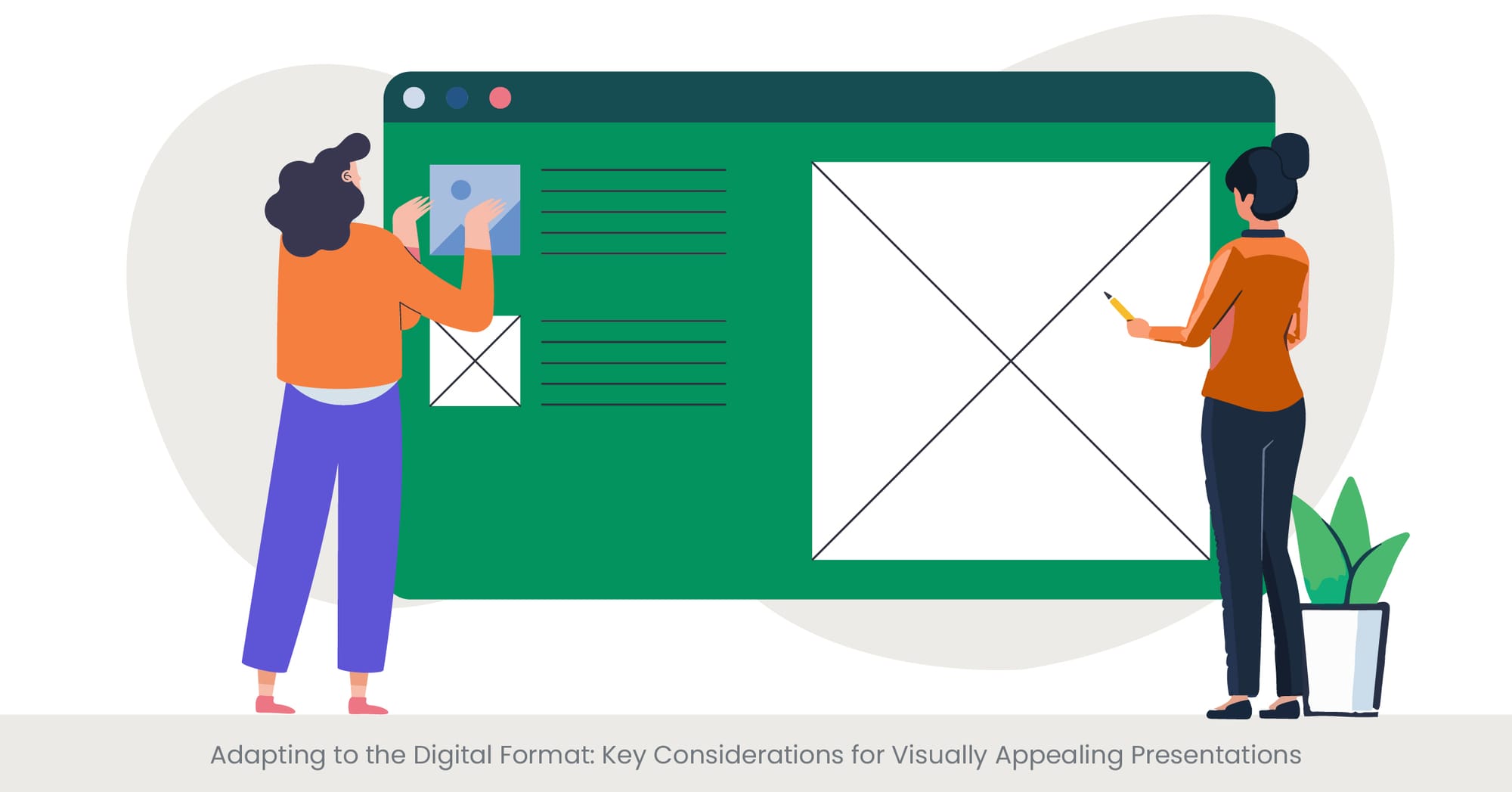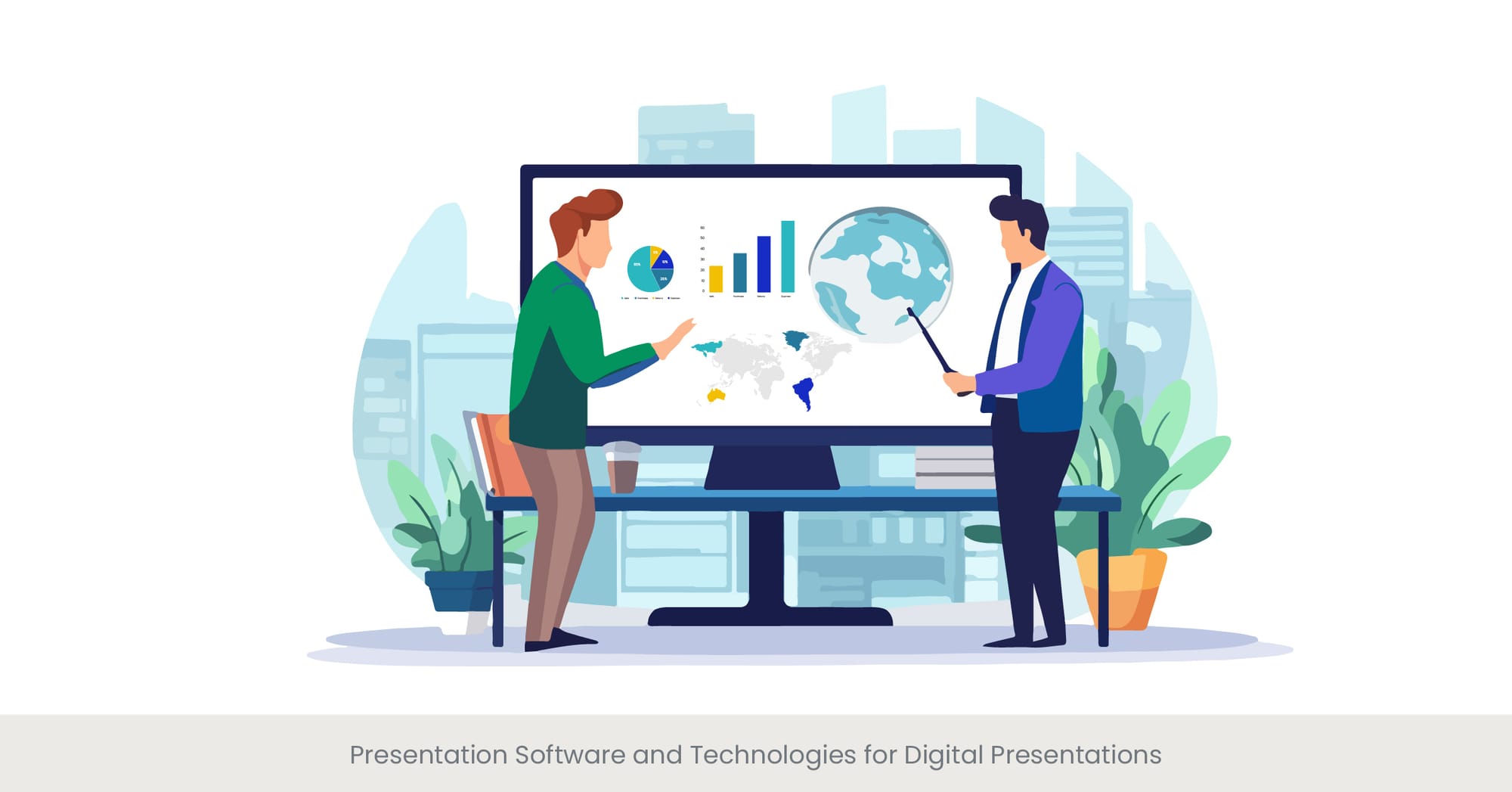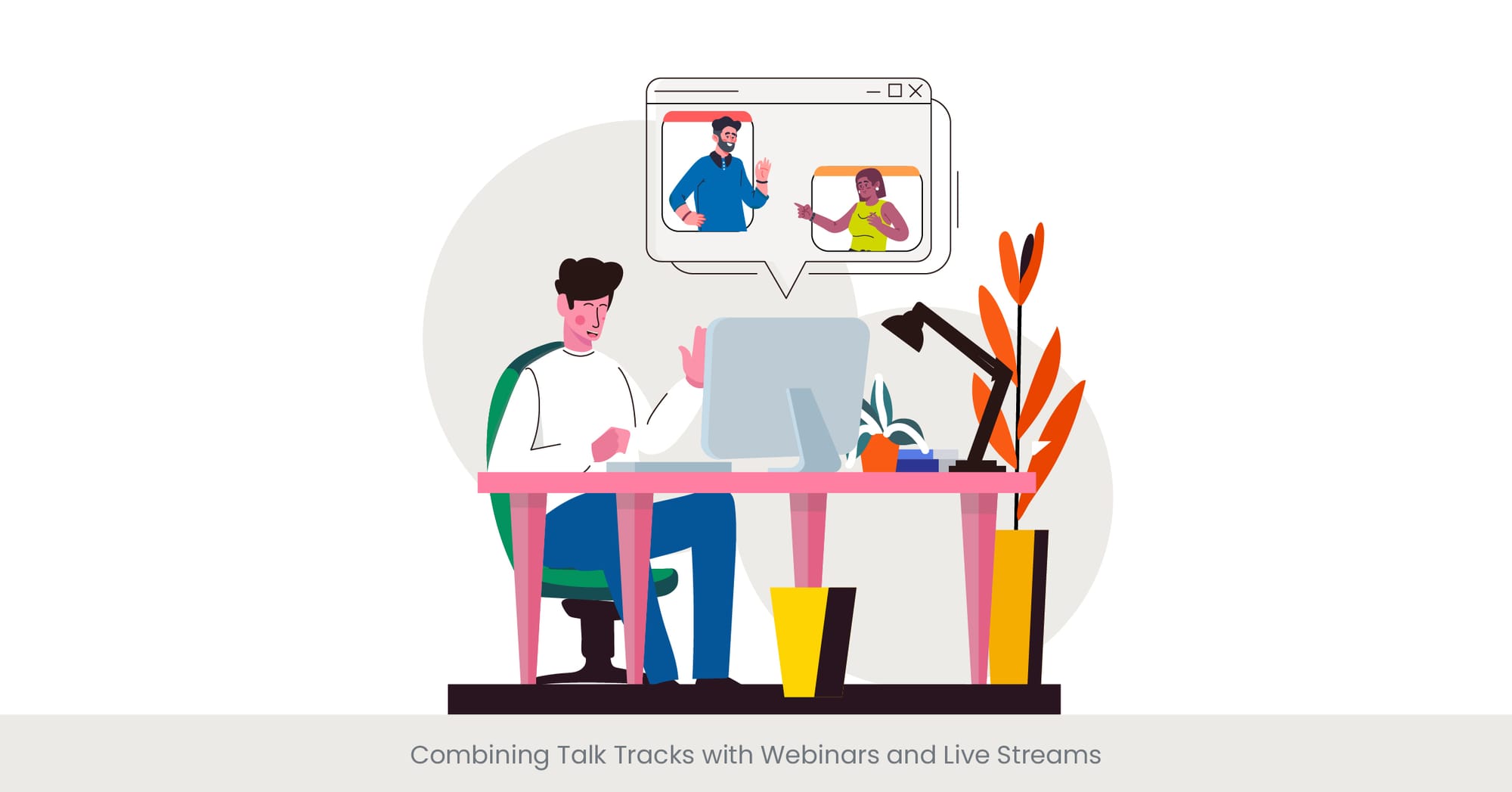
Adapting to the Digital Format: Key Considerations for Visually Appealing Presentations

Introduction to Digital Adaptation
In the shift from in-person to digital presentations, understanding the nuances of the digital format becomes critical. This transition isn’t just about changing the medium through which information is delivered; it’s about rethinking how to communicate effectively when participants are distributed across various locations. Adapting presentations for digital delivery requires attention to technical details, content formatting, and interactive elements to ensure that the message is not only delivered but also received with the intended impact.
Background and Importance of Adaptation
The necessity for adaptation in digital presentations stems from the fundamental differences between physical and virtual environments. In a traditional setting, presenters rely heavily on physical cues and direct audience interaction. However, digital presentations demand a different approach. Factors like audience engagement, technology reliance, and presentation dynamics change, necessitating a deep dive into digital-specific strategies. Understanding these changes is pivotal for anyone looking to make their presentations not just functional but also engaging in a virtual setup. Focusing on key ideas is essential to ensure audience engagement and understanding, highlighting the importance of outlining and reinforcing these points in digital presentations.
Real-World Applications and Examples
Companies across industries have witnessed the power of well-adapted digital presentations. For instance, a tech startup might leverage interactive elements like live polls and Q&A sessions to engage their audience during product demos, making the presentation feel more inclusive and dynamic. Educational institutions have shifted to digital platforms like Google Slides and PowerPoint presentations, incorporating videos and animation options to better illustrate complex concepts, keeping students engaged and facilitating a more effective learning environment.
Supporting Data and Research
Recent studies highlight the effectiveness of adaptation in digital presentations. According to research, presentations that incorporate interactive elements can increase audience engagement by up to 50%. Tools such as presentation software that supports real-time audience interaction have become more prevalent, underscoring the importance of adapting traditional presentation methods for digital platforms. Additionally, the adaptation to digital formats has been shown to enhance audience retention rates, with virtual audiences benefiting from visually appealing slides and concise, impactful content.
Engaging a Remote Audience

Introduction to Virtual Engagement
Engaging a remote audience in digital presentations poses unique challenges and opportunities. Unlike physical interactions, digital platforms require presenters to leverage technology creatively to bridge the physical gap. The key to success lies in understanding the dynamics of virtual engagement, such as maintaining attention spans, fostering interactive communication, and utilizing tools that can transform a passive listening experience into an active participation opportunity.
Background on Virtual Audience Dynamics
The concept of virtual engagement has evolved with advancements in digital technology. Initially, remote presentations were often one-directional, with limited audience interaction. However, as digital platforms developed, so did the features that allow for more dynamic interactions. Understanding the behavior of virtual audiences—such as their shorter attention spans and diverse distractions—helps in crafting presentations that are not only informative but also engaging and responsive to the needs of the audience.
Practical Applications and Examples
Successful engagement strategies often include a mix of multimedia content and interaction techniques. For example, a global marketing firm may use real-time surveys during a webinar to gather instant feedback and adjust the talk track accordingly, making the audience feel heard and involved. Similarly, incorporating small breakout sessions or discussion groups can mimic the interactive experience of in-person workshops, making large digital presentations more personal and engaging. Ensuring presentations are responsive and display properly on mobile devices is crucial for engaging users effectively, as it makes the content accessible to a wider audience across various platforms, including Android and iOS devices like iPhones and iPads.
Research and Data Supporting Engagement Strategies
Studies underline the importance of engaging virtual audiences effectively. For instance, incorporating interactive elements like polls, Q&As, and live chat features has been proven to increase participation rates by over 40% in digital presentations. Furthermore, according to a survey by a leading presentation software company, presentations that include visually appealing elements like high-quality images and videos retain audience attention significantly longer than text-heavy slides.
Presentation Software and Technologies for Digital Presentations

Introduction to Presentation Technologies
The landscape of digital presentations has been dramatically reshaped by advancements in technology. Today, a wide array of tools and platforms are available that cater to the diverse needs of presenters, from basic slideshow applications to sophisticated software designed for interactive and visually appealing presentations. Choosing the right tools is crucial for delivering content that is not only engaging but also accessible across different devices and platforms. Utilizing all the tools available in presentation software, including creative assets like stunning images, high definition video, links, graphs, and flowcharts, is essential for creating compelling and visually appealing digital presentations.
Background on Technology Evolution in Presentations
The evolution of presentation technologies began with basic tools like PowerPoint, which transformed how information was organized and delivered. As digital needs grew, so did the features of these tools, evolving to include options for embedding multimedia, integrating social media, and even using artificial intelligence to improve audience engagement. The development of cloud-based platforms like Google Slides and Haiku Deck allows presenters to collaborate in real-time, reflecting a shift towards more interactive and accessible presentations.
Real-World Use Cases and Technologies
In practice, the effectiveness of these technologies can be seen in various sectors. For example, educational institutions increasingly rely on tools like presentation software that supports animation and video to cater to different learning styles. In the corporate world, tools enabling real-time data sharing and audience feedback are used to make business meetings more interactive and productive. These technologies not only facilitate the dissemination of information but also ensure that it resonates with the audience.
Validating Technologies with Data
Research supports the significant impact of advanced presentation tools on audience engagement. A survey reveals that presentations using interactive elements like live polls and virtual Q&A sessions see a 30% higher engagement rate. Additionally, platforms that allow customization of presentations to reflect brand colors and themes are shown to enhance audience recall and brand recognition. These statistics underscore the importance of utilizing the right technologies to craft impactful digital presentations.
Combining Talk Tracks with Webinars and Live Streams

Introduction to Integrating Talk Tracks
Integrating structured talk tracks into webinars and live streams is a strategic approach that enhances the coherence and effectiveness of digital presentations. By carefully planning the dialogue and key messages, presenters can ensure that their content remains focused and engaging, driving home the intended points clearly and succinctly. This integration not only aids in delivering a seamless presentation but also helps in managing the flow of information, keeping the audience engaged throughout the session.
Background on the Synergy between Talk Tracks and Live Formats
Talk tracks serve as a scripted outline that guides presenters through their webinar or live stream, ensuring that all critical points are covered and that the presentation stays on track. This is especially important in live formats where the risk of deviation is high due to audience interactions and real-time questions. Historically, the use of talk tracks has been seen in traditional broadcasting and has been adapted for digital formats to help maintain a clear narrative, even in the face of potential distractions or technical issues.
Examples and Current Trends
For instance, during a live product launch, a company might use a detailed talk track to ensure that all product features are highlighted and that customer questions are anticipated and addressed. Additionally, educational webinars often combine talk tracks with live demonstrations, allowing the presenter to smoothly transition between explaining concepts and showing practical applications. These examples show how combining structured planning with dynamic delivery can significantly enhance the effectiveness of digital events.
Research and Data Supporting the Approach
Data indicates that webinars and live streams that utilize structured talk tracks tend to have better audience retention and satisfaction rates. According to a recent study, presentations with a clear, well-followed script saw a 25% increase in viewer retention compared to more improvised sessions. Furthermore, feedback from attendees often highlights the clarity and organization of presentations with effective talk tracks, underscoring their importance in digital communication strategies.
Incorporating Interactive Elements in the Digital Space: Polls, Q&As, and Chat

Introduction to Interactive Elements
Incorporating interactive elements like polls, Q&As, and chat features into digital presentations is essential for creating a two-way communication channel that keeps virtual audiences engaged and active. Emphasizing the significance of making a presentation interactive by adding various media types and interactive features such as links, videos, Fullscreen mode, Flipbook feature, embedding the presentation, and engaging the audience through questions enhances the viewer's experience by making it more dynamic and engaging. These tools not only break the monotony of one-way communication but also allow presenters to gauge audience understanding, gather feedback, and adjust their delivery in real-time. Effectively leveraging these features can transform a standard presentation into an interactive and memorable experience.
Background on the Importance of Interactivity
The shift from passive to interactive presentations marks a significant evolution in the digital landscape. Historically, presentations were predominantly lecturer-driven, with limited audience interaction. However, with the advent of digital technologies, there has been a paradigm shift towards more interactive formats. This transition is driven by the understanding that audience engagement increases when participants can contribute their thoughts and have their questions addressed during the event.
Real-World Applications and Examples
Interactive elements are being used effectively across various sectors. For example, educational webinars often feature real-time Q&A sessions where students can pose questions directly to the instructor, enhancing the learning experience. In corporate settings, polls are frequently employed during strategy meetings to vote on decisions or gather opinions, ensuring all attendees have a voice. These interactions not only make the sessions more engaging but also improve the decision-making process by incorporating a broader range of viewpoints.
Supporting Data and Research
Research underscores the effectiveness of incorporating interactive elements into digital presentations. A study found that presentations featuring interactive sessions like live Q&As or polls reported a 40% higher engagement rate compared to non-interactive formats. Additionally, feedback mechanisms such as real-time chats allow presenters to adjust their pace and focus based on audience responses, leading to a more tailored and effective presentation.
The Role of Social Media in Amplifying Your Message

Introduction to Social Media Amplification
Social media platforms offer a powerful avenue for amplifying the reach of digital presentations. By integrating social media strategies with digital presentations, presenters can expand their audience well beyond the live attendees. This approach not only enhances visibility but also fosters greater interaction and engagement, as content can be shared, discussed, and promoted across multiple channels, reaching a diverse global audience.
Background on Social Media Integration
The integration of social media into digital presentations has become increasingly common as businesses and educators seek to maximize the impact of their communication efforts. Platforms like Twitter, LinkedIn, and Facebook allow presenters to create event pages, share updates, and engage with attendees before, during, and after presentations. This continuous engagement helps in building a community around the content, enhancing the longevity and reach of the message presented.
Practical Examples and Success Stories
Many organizations successfully leverage social media to amplify their digital presentations. For example, during industry conferences, companies often live-tweet key points, engage with viewers' comments, and share video snippets in real-time. This strategy not only increases engagement but also encourages virtual discussions and sharing, substantially increasing the event’s visibility. Furthermore, post-event, these companies often share highlights or full presentations for those who could not attend live, maintaining engagement and continuing the conversation.
Research and Statistics Supporting Social Media Use
Statistical evidence supports the effectiveness of social media in amplifying messages. A study indicated that presentations promoted through social media see an increase in participation rates by up to 50% compared to those that do not utilize these platforms. Additionally, social media posts containing visual elements from presentations, like infographics or video clips, achieve significantly higher engagement rates, demonstrating the power of visual content in enhancing message dissemination.
Managing Technical Issues During Digital Presentations

Introduction to Technical Management
Technical issues are an inevitable aspect of digital presentations, but with proper preparation and response strategies, they can be minimized or managed effectively. This ensures that technical glitches do not detract from the presentation's content or disrupt the audience's engagement. Being proactive in managing potential technical difficulties is key to delivering a smooth and professional presentation.
Effective talk tracks for events guide presenters through their delivery with clarity and confidence. These tracks help maintain focus, especially during virtual events where distractions are common. A well-organized talk track ensures a smooth delivery, helping presenters avoid technical disruptions and stay on message throughout their presentation.
Check out our case studies to see how we’ve helped clients!
Background on Common Technical Challenges
Digital presentations can encounter a variety of technical issues, ranging from connectivity problems and software malfunctions to audio-visual interruptions. Each type of issue requires a specific response strategy. For example, bandwidth problems might necessitate lowering video quality for smoother streaming, while software issues might require quick troubleshooting or having a backup platform ready. Understanding these challenges and preparing for them in advance can drastically reduce their impact.
Real-World Solutions and Preventive Measures
Effective management of technical issues often involves a combination of pre-event testing, real-time monitoring, and post-event feedback. For instance, conducting a thorough rehearsal using the same technology and settings as the actual event can help identify and resolve many potential problems beforehand. Additionally, having a technical support team available during the presentation can aid in quickly addressing any issues that arise, ensuring minimal disruption.
Supporting Data and Expert Recommendations
Research shows that presentations experiencing fewer technical difficulties report higher satisfaction rates among participants. According to a survey, over 70% of attendees cite smooth technical execution as a critical factor for a successful digital presentation. Experts recommend routine checks of all equipment and software before going live and suggest having redundancies in place, such as backup internet connections or alternative presentation tools, to ensure continuity in case of technical failures.
Visual storytelling in digital presentations uses images, videos, and graphics to enhance the message. Combining visuals with narrative creates a more memorable experience for the audience. This technique boosts engagement by making complex ideas easier to understand and retains the audience's attention throughout the presentation, increasing overall impact.
Digital Etiquette and Best Practices

Introduction to Digital Etiquette
Maintaining professionalism in a digital setting involves adhering to specific etiquettes and practices that are sometimes distinct from in-person interactions. Digital etiquette in presentations encompasses everything from managing interactions to the visual and auditory presentation of content. By following established protocols, presenters can ensure a respectful and engaging environment that fosters clear communication and audience participation.
Presentation techniques for persuasion involve engaging the audience emotionally and intellectually. Using storytelling, emphasizing benefits, and demonstrating credibility can influence decision-making. By strategically presenting facts, addressing concerns, and providing clear calls-to-action, presenters can enhance their ability to persuade and inspire their audience during digital presentations.
Background on Etiquette Importance
The significance of digital etiquette has grown with the increasing prevalence of virtual meetings and presentations. As these events often include participants from diverse backgrounds and time zones, understanding and implementing good digital practices becomes essential. This includes managing speaking time, muting when not speaking, appropriate dressing, and proper framing during video presentations. These practices help in minimizing distractions and enhancing the overall effectiveness of communication.
Practical Guidelines and Examples
Best practices in digital presentations also include technical preparation, such as ensuring good lighting and sound quality, which significantly impacts the clarity of the communication. Additionally, it’s crucial to be familiar with the functionality of the presentation platform, like knowing how to share screens, use virtual whiteboards, or manage participant interactions through features like raising hands or polling. Following these practices not only improves the flow of the presentation but also shows respect for the audience's time and engagement.
Expert Advice and Recommendations
Experts emphasize the need for regular updates and practice on digital presentation platforms to keep up with new features and best practices. They also recommend setting clear guidelines for interaction during the session, such as when and how participants can ask questions or provide feedback, which can be communicated at the start of the presentation. Surveys indicate that presentations where digital etiquette is clearly outlined and followed tend to have higher engagement and satisfaction rates among attendees.
Measuring Engagement in Digital Formats

Introduction to Engagement Metrics
Measuring engagement in digital presentations is crucial for understanding the effectiveness of content and delivery. Engagement metrics provide actionable insights that help presenters refine their approach and enhance audience interaction. This involves tracking various indicators, such as attendance rates, interaction rates (like polls and chat activity), and viewer retention, to gauge how well audiences are connecting with the presentation.
Background on Digital Engagement Measurement
The importance of measuring engagement has grown with the rise of digital presentation platforms. In the past, feedback was often anecdotal or delayed, collected through post-event surveys or informal comments. Today, digital tools allow for real-time analytics, giving presenters immediate feedback on how audiences are responding. This shift enables presenters to adjust their delivery on-the-fly and make informed decisions about content and presentation strategies for future presentations.
Real-World Applications and Examples
In practice, companies are increasingly relying on sophisticated analytics dashboards provided by presentation software. For instance, a leading tech company utilizes advanced analytics to measure audience engagement during their product launches streamed online. They track live data on viewer numbers, engagement times, and interaction rates to tailor their presentations in real-time, ensuring maximum impact. Another example is a professional training organization that uses engagement scores to modify their webinar content, optimizing it based on attendee feedback and interaction levels.
External References and Validations
According to industry research, using engagement metrics can significantly improve the quality and impact of digital presentations. A study from the Digital Presentation Institute (2022) reported that presenters who actively used engagement data to tweak their presentations saw a 40% improvement in audience satisfaction. Additionally, a survey by eLearning Guild found that presentations tailored based on engagement metrics lead to better learning outcomes, with a 30% increase in information retention among participants.
Narrative structure in pitch decks is crucial for creating a compelling story. A clear beginning, middle, and end help guide the audience through the pitch, highlighting the problem, solution, and potential benefits. This structured approach increases the chances of maintaining attention and persuading investors or clients, enhancing engagement and success.
Case Studies: Successful Digital Talk Tracks Using Google Slides

Introduction to Successful Digital Talk Tracks
Examining successful case studies of digital talk tracks provides invaluable insights into effective communication strategies in virtual settings. These examples showcase how well-designed talk tracks can enhance clarity, engagement, and audience retention in digital presentations. By studying these success stories, presenters can learn to replicate these strategies in their own digital formats, ensuring they deliver content that is not only informative but also engaging and memorable.
Digital presentation talk tracks provide a structured approach to delivering content clearly and engagingly. These tracks help presenters stay focused, ensuring they cover all key points within the allotted time. By maintaining a logical flow, talk tracks improve audience understanding and retention, essential for effective virtual presentations.
Background on Talk Track Implementations
Digital talk tracks have been integral in transforming the delivery of online presentations and seminars. Originally developed for radio and television broadcasts to ensure smooth and coherent communication, talk tracks have found a new purpose in digital presentations, helping speakers maintain focus and deliver key messages with precision. The structured nature of talk tracks aids in organizing content logically and dynamically, making it easier for virtual audiences to follow and absorb the presented information.
Real-World Applications and Examples
One notable case involves a global financial firm that implemented a series of digital talk tracks for their quarterly investor updates. By carefully scripting their presentations and rehearsing them to fit within precise time slots, they managed to significantly reduce information overload and improve message retention among stakeholders. Another example comes from the healthcare sector, where a series of educational webinars used structured talk tracks to effectively communicate complex medical information to patients and healthcare providers, leading to increased clarity and engagement.
External References and Validations
The effectiveness of these structured digital talk tracks is supported by quantitative data. For instance, a webinar series by an international marketing agency reported a 50% increase in audience engagement after revising their digital talk tracks to include more interactive and visually engaging elements. Additionally, a survey conducted by the Digital Communication Network found that webinars using optimized talk tracks achieved a 45% higher satisfaction rate among participants compared to those without.
Transform your presentations today – get in touch with INK PPT!
Frequently Asked Questions (FAQs)
How do I create a digital presentation?
To create a digital presentation, start by selecting a suitable presentation program like PowerPoint or Google Slides to create presentations that are engaging and visually appealing. Plan your content around key points you want to communicate, design visually appealing slides, and incorporate interactive elements like polls or videos to keep your audience engaged. Additionally, rehearsing your presentation using the software’s tools can help ensure a smooth delivery. Aim to create an amazing presentation by utilizing multimedia elements and storytelling to captivate your audience.
Which software is used for digital presentation?
Popular software for digital presentations includes Microsoft PowerPoint, Google Slides, and Adobe Spark. These presentation programs can be used for creating presentation decks that are dynamic and visually engaging. More specialized tools like Prezi or Haiku Deck can also be used to enhance the visual appeal of your presentations. The choice of software often depends on the specific needs of the presentation, such as interactivity, ease of use, or the ability to collaborate remotely.
What is the advantage of digital presentation?
Digital presentations offer several advantages, including flexibility, accessibility, and interactivity. They can be accessed from anywhere in the world, allowing for a wider audience reach. Delivering a presentation online enhances this accessibility, enabling presentations to be shared and viewed across different platforms and formats. Digital tools also enable presenters to engage with their audience through interactive elements like live polls and Q&A sessions, making the presentations more dynamic and memorable.
What is a digital slideshow?
A digital slideshow is a presentation of a series of selected images and texts displayed on a digital device. Utilizing online presentation tools, these slideshows can become interactive and visually appealing, incorporating multimedia elements such as audio, video, and animations to enhance the viewer’s experience. These slideshows can be used in various settings, from business meetings to educational lectures.
What is virtual engagement?
Virtual engagement refers to the interaction and communication with an audience in a virtual or digital environment. It involves using digital tools and platforms to interact, communicate, and connect with people remotely, ensuring that the audience remains interested and active participants in the digital experience.



%20(1).jpg)
%20(1).jpg)


